Chp. 14 Airport Operations
1/69
Earn XP
Description and Tags
Has flashcards on slides
Name | Mastery | Learn | Test | Matching | Spaced |
|---|
No study sessions yet.
70 Terms
Where can you land on a marked off runway threshold?
After

displaced threshold
What can you use a relocated threshold for
Closed portion is not available for taking off or landing but can use for taxing. Will be indicated by yellow arrows.
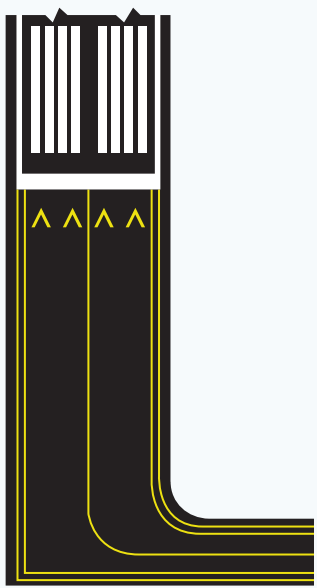
Can you land on a displaced threshold arrow?
No, it is used for obstruction. For taxing, noise buffer, near a road, etc.
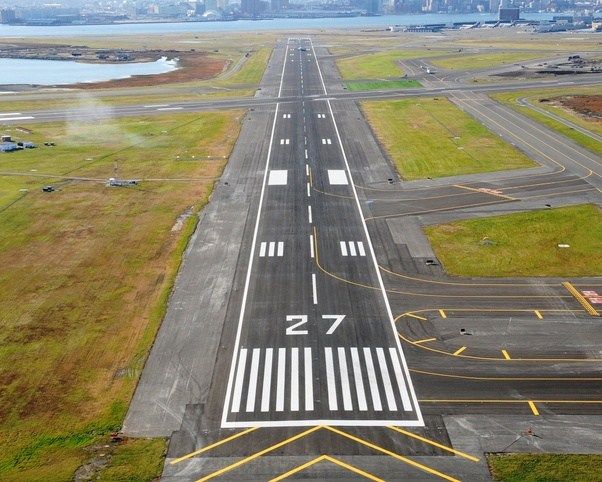
what do the yellow arrows indicate?
Overrun aka chevrons. For example, jet landing blows dirt and makes hole before runway if no chevron.
When a taxi way leads to two or more runways will be separated with
a dot
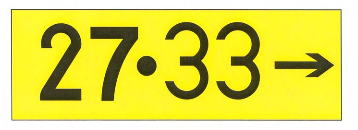
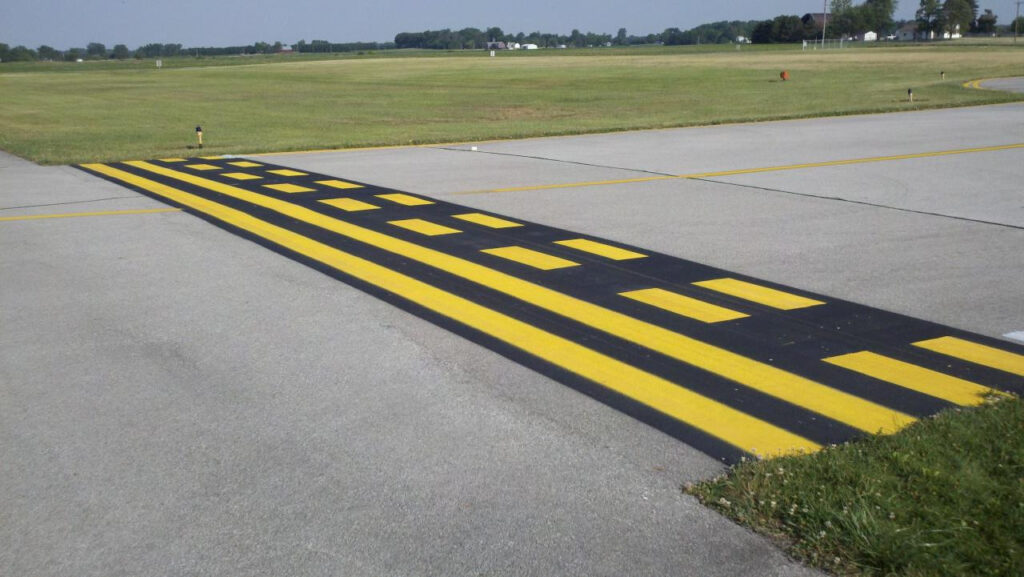
runway hold postion
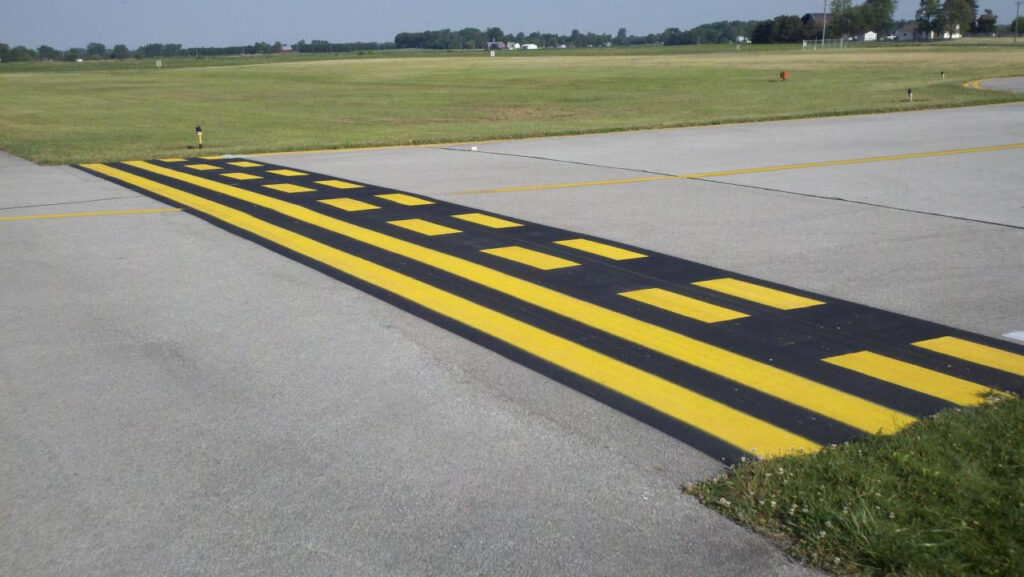
sold yellow line means
you cannot pass without ATC Clerance
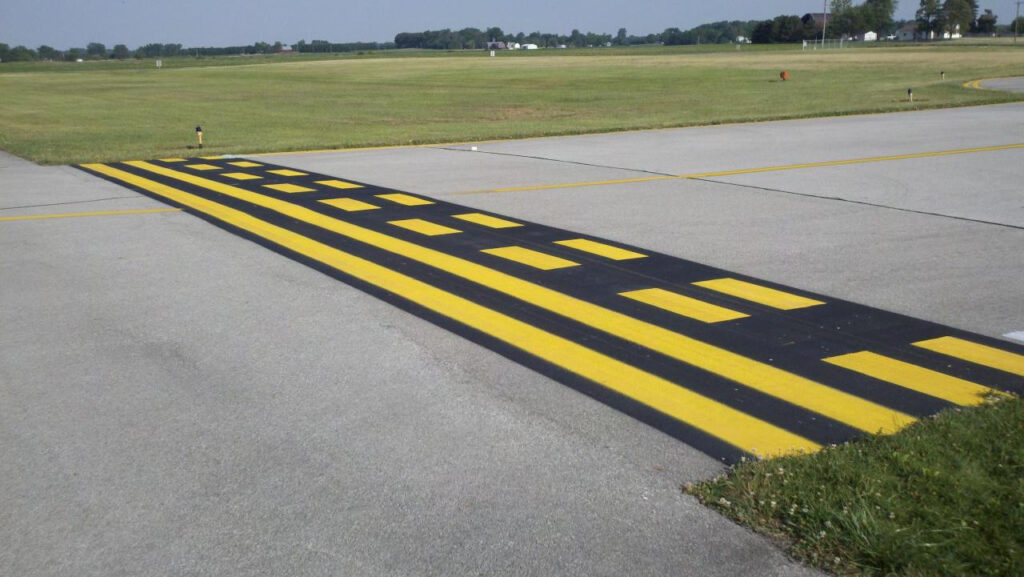
dashed line means
you can pass with caution
“if it’s dashes you can dash it”

location sign “black background is where you’re at”
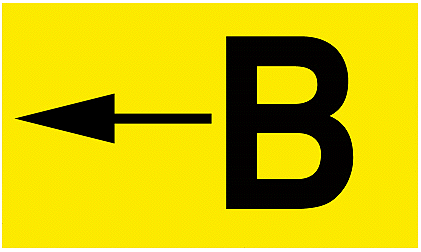
direction/taxi way sign
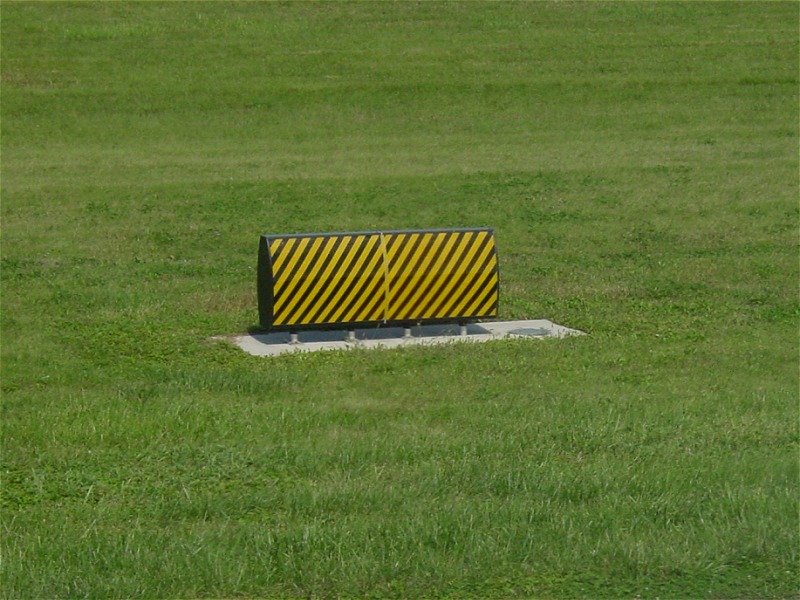
taxiway exit sign
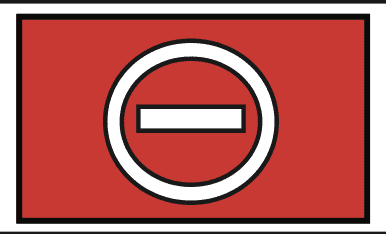
do not enter sign
ISL means
Instrument holding system

ISL sign that you will see on the ground next to the Instrument landing sign
When do you not cross ISL
bad weather
Civilian beacon lights
white and green flashing
Water airport beacon lights
white and yellow flashing
Heliport beacon light
white, green, yellow flashing
Military
two quick white flashing alternating with green
Daylight operations for beacons occurs:
when ceiling is 1000 and 3 statue miles
Daylight operations are
VASI means
visual approach slope indicator. Can be usefully detected four miles out.
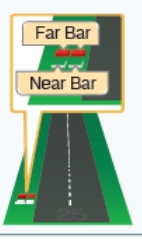
indicates
on glide path
Red VASI means
too low
“red on red, you’ll soon be dead”
White VASI means
you’re too high
whi
Tricolor vasi:
blow red, on path green, above yellow

End or runway lighting
lateral red lights and flashing REILS
if you see red lights how many feet does the runway have left?
less than 1,000ft
how much runway is left when you see red and white alternating lights?
3000ft-1000ft
midline of taxiway lights is
green
along taxiway the light color is
blue
Pilot controlling lights use
PTT push to talk/radio
To control highest intensity available
hold PTT 7 times within 5 seconds
To control highest intensity available
7 times within 5 seconds
To control medium intensity available
5 times in 5 seconds
To control lower intensity available
3 times within 5 seconds
left wing beacon is
red
right wing beacon is
green
tail beacon is
white
small planes entering the traffic pattern must be at:
1000 agl unless otherwise noticed
When are you most likely to crash during final approach?
faster aircraft trying to overtake slower one (lower aircraft always has the right of way, can’t see above)
nontowered airports you should try to call out
10SM
Wind Sock
fly against the wind, always want to fly into the little end
Wind Tee
points into the wind, cant show wind activity

Tetrahedron
fly into big end, cant show wind activity
opposite of the windsock
LASHO land and hold short operations
asked by ATC but you can decline, students cannot participate in it
except when necessary for takeoff and landing, what is the minimum safe altitude for a pilot to operate an aircraft anywhere?
an altitude allowing, if power unit fails, an emergency landing without undue hazard to persons or property on the surface.
Except when necessary for takeoff and landing, what is the minimum safe altitude for a pilot to operate an aircraft over a congested area?
An altitude allowing of 1,000 ft. above the highest
obstacle within a horizontal radius of 2,000 ft.
Except when necessary for takeoff and
landing, what is the minimum safe altitude
for a pilot to operate an aircraft over other
than a congested area?
An altitude allowing of 500 ft. AGL, except over open
water or a sparsely populated area, which requires 500 ft.
from any person, vessel, vehicle, or structure.
When approaching to land on a runway
served by a visual approach slope indicator
(VASI), the pilot shall...
Maintain the altitude at or above the glide slope.
The numbers 9 and 27 on a runway indicate that the runway is oriented approximately...
090° and 270° magnetic.
review slides for diagram questions
yes, I will
UNICOM
nongovernment air/ground radio communication station that may provide airport information at public use airports where there are no tower or FSS
Who’s on UNICOM?
sometimes people who answer the radio are not pilots
How do you enter a nontowered airport?
always entered by pattern altitude. Entering the pattern depends on your arrival.
Downwind side of the pattern is to approach the course 45 degrees midfield
Upwind side, you can announce your intentions cross over midfield at least 500ft above pattern altitude (normally 1,500AGL). However, if there are large aircraft it is best to operate 2000ft AGL.
Complete a 2-mile scan for traffic and watch the descending pattern altitude, then turn right to enter 45-degree downwind leg midfield.
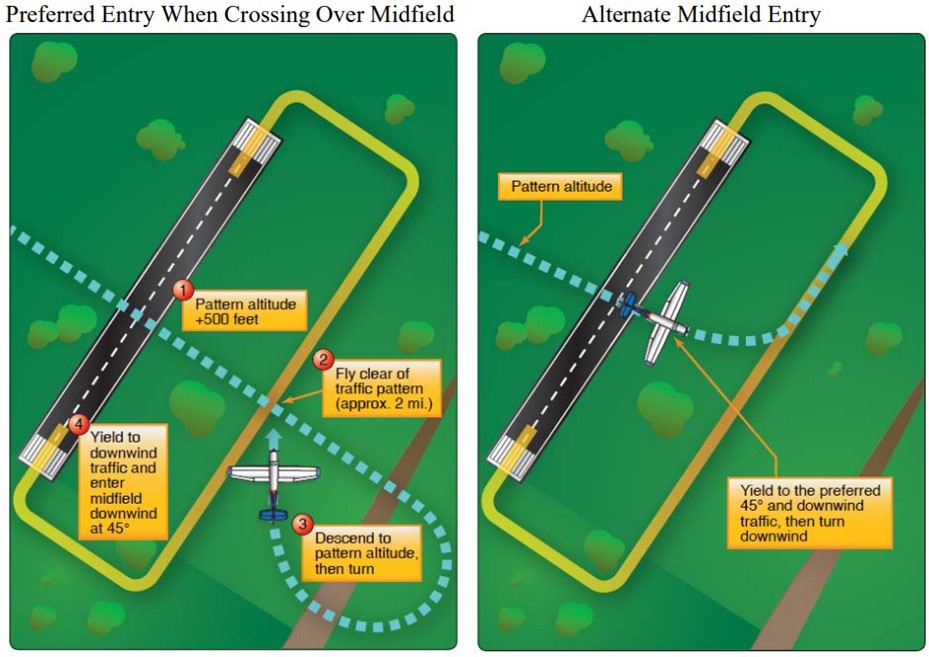
MULTICOM
for airports with no flight service station or UNICOM
What do you use when there is no tower, but Flight service station is open
communicate on CTAF common traffic advisory frequency
What do you use when tower has FSS but it’s closed
self-announce on Common traffic advisory frequency
What to communicate on when no tower or flight service station
self-announce on Common traffic advisory frequency
Threshold is how many bars
four
Touchdown is how many bars
three bars
The bars decrease indicating
how much runway space you have left
What traffic location pattern are you most likely to collide with another plane?
on downwind or final approach, generally with a faster aircraft overtaking a smaller one
10SM out of an airport with no control tower operating you should
communicate on radio as if there was a tower?
Default downwind is left, or right?
Left unless it says right
Usually only says right when there’s an obstruction
Congested areas
must be at an altitude of 1,000ft above the highest obstacle within a horizontal radius of 2,000ft of the aircraft
How high must you be around obstacles that are not congested areas?
500ft above ground level AGL
Where is the minimum Clerance anywhere else?
at sufficient altitudes to permit power-off landing without undo hazard to persons and property
transponder codes
7500 hijack
7600 can’t talk now
7700 emergencies